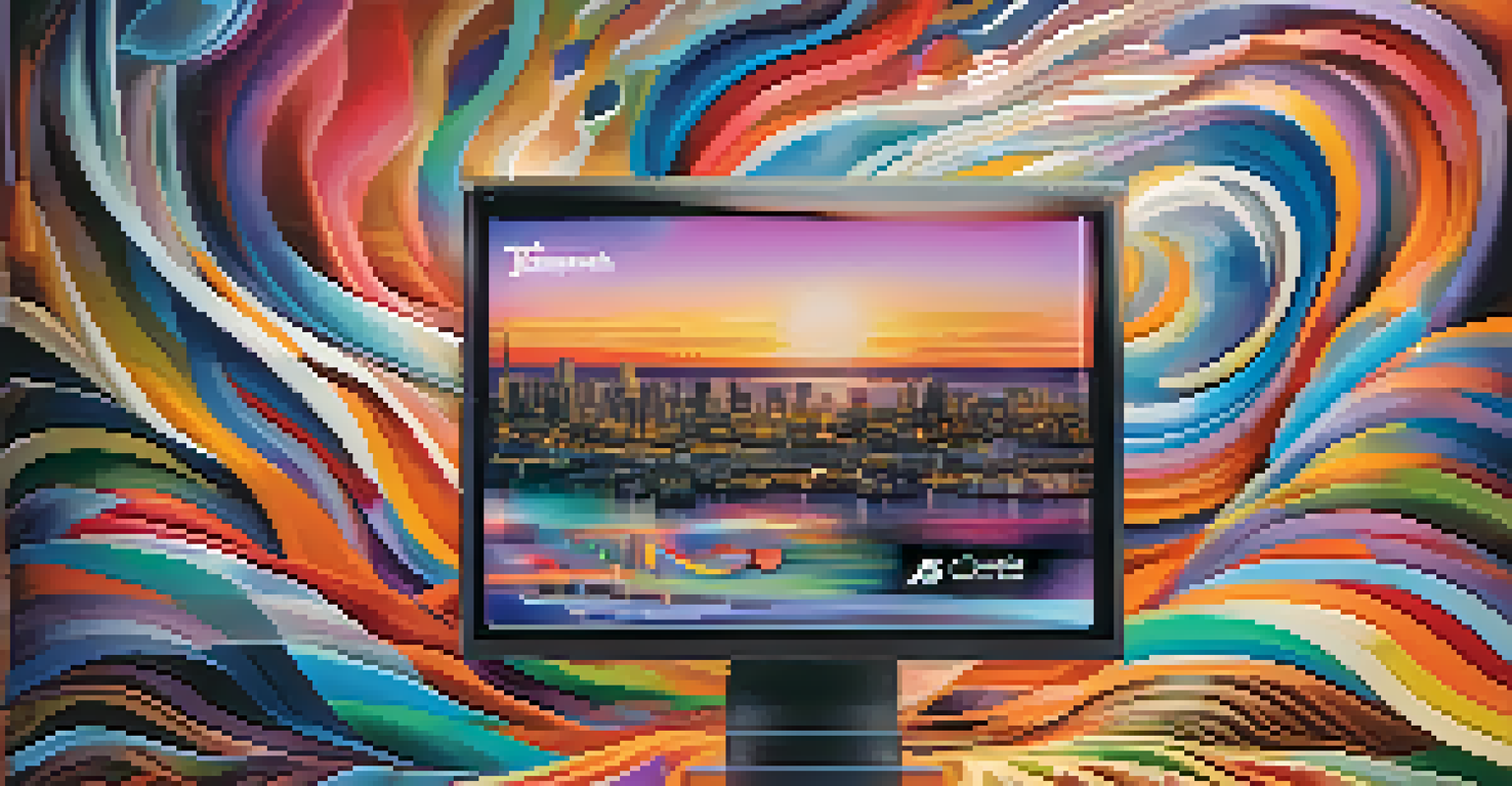The Rise of Streaming: Changing Audience Viewing Preferences

The Evolution of Television: From Cable to Streaming
Television has come a long way from the days of rabbit ears and cable packages. With the advent of streaming services like Netflix and Hulu, viewers now have the freedom to watch what they want, when they want. This shift has not only changed our viewing habits but also how content is produced and distributed.
Television is a medium. It’s not a genre. It’s a way to tell stories that can take many forms.
No longer tethered to a fixed schedule, audiences can binge-watch entire seasons in one sitting, making the experience more like reading a novel than flipping through a TV guide. This flexibility has created a more personalized viewing experience that caters to individual preferences.
As more people cut the cord, traditional cable networks are feeling the pressure to adapt or risk becoming obsolete. The rise of streaming has ignited a fierce competition for viewers' attention, forcing all players in the industry to rethink their strategies.
Viewer Preferences: The Demand for On-Demand Content
Today's audiences crave on-demand content that fits seamlessly into their busy lives. The convenience of streaming allows viewers to consume media at their own pace, whether it's during a lunch break or late at night. This shift has led to a surge in demand for diverse and engaging content across various genres.

Moreover, the ability to pause, rewind, and rewatch has redefined how we engage with stories. Viewers can delve deeper into plots and character development, fostering a more immersive experience. This new level of engagement has also inspired creators to craft richer narratives that captivate audiences.
Streaming Transforms Viewing Habits
The shift from cable to streaming allows viewers to watch content on their own schedule, leading to a more personalized viewing experience.
Streaming platforms are responding to this demand by investing heavily in original programming, ensuring they cater to the varied tastes of their subscribers. This has resulted in an explosion of unique voices and perspectives, enriching the overall media landscape.
The Role of Technology in Streaming Growth
Technology plays a crucial role in the rise of streaming services. High-speed internet and the proliferation of smart devices have made it easier than ever for viewers to access their favorite shows and movies. This accessibility has opened the door for a wider audience, including those who may not have previously engaged with traditional media.
The future of television is not about making television shows, it’s about making television experiences.
Additionally, advancements in streaming technology have improved the overall viewing experience. Features like 4K resolution, surround sound, and personalized recommendations enhance the way we consume content, making it more enjoyable and tailored to individual preferences.
As technology continues to evolve, so too will the streaming landscape. Innovations like virtual reality and augmented reality are on the horizon, promising to further transform how audiences experience their favorite content.
The Impact of Social Media on Viewing Habits
Social media has become an integral part of the viewing experience, influencing what people watch and how they discuss it. Platforms like Twitter and Instagram enable fans to interact in real-time, creating a sense of community around shows and movies. This social engagement often drives viewers to seek out new content based on trending topics and recommendations from friends.
Moreover, streaming services leverage social media to promote their offerings, using targeted ads and influencer partnerships to reach potential subscribers. This strategy not only boosts visibility but also fosters a connection between viewers and the content they love.
On-Demand Content is Essential
Today's audiences demand on-demand content that fits seamlessly into their busy lives, prompting streaming services to invest in diverse programming.
As conversations around shows unfold online, audiences are increasingly participating in fandoms and discussions, which can further enhance their viewing experience. This phenomenon has created a culture where watching content is not just a solitary activity but a shared experience.
Changing Demographics: Who's Streaming?
The demographics of streaming audiences are changing rapidly, with people of all ages embracing this new way to consume content. While younger generations have been early adopters, older adults are increasingly turning to streaming platforms for their viewing needs. This shift reflects a broader trend towards digital consumption across all age groups.
Streaming services cater to diverse audiences by offering a wide range of content, from classic films to contemporary series. This inclusivity ensures that everyone, regardless of age or background, can find something that resonates with them.
As streaming continues to grow, understanding these changing demographics will be vital for content creators and marketers alike. They must adapt their strategies to meet the evolving tastes and preferences of a more varied audience.
The Future of Streaming: Trends to Watch
As streaming continues to dominate the entertainment landscape, several trends are emerging that will shape its future. One notable trend is the rise of ad-supported streaming services, which provide free or lower-cost options for viewers. This model appeals to budget-conscious consumers while offering advertisers a new avenue to reach potential customers.
Another trend is the growing importance of international content. As streaming services expand globally, they are investing in local productions, recognizing that audiences are eager for diverse stories from different cultures. This not only enriches the platform's offerings but also allows for cross-cultural connections among viewers.
Technology Drives Streaming Growth
Advancements in technology, including high-speed internet and smart devices, have made streaming more accessible and enjoyable for a wider audience.
Lastly, the integration of interactive content, such as choose-your-own-adventure shows, is gaining traction. This innovative approach empowers viewers to make decisions that influence the storyline, creating a more engaging and personalized experience.
Challenges Facing the Streaming Industry
Despite the success of streaming services, the industry is not without its challenges. As competition intensifies, companies must continually innovate to capture and retain viewers' attention. This can lead to a content saturation where audiences may feel overwhelmed by the sheer volume of choices available.
Additionally, the costs associated with producing high-quality content are skyrocketing. Streaming platforms must balance their budgets while still delivering compelling shows and movies that keep subscribers engaged. This financial pressure can sometimes result in a reliance on familiar franchises rather than original storytelling.

Finally, issues surrounding copyright and content licensing can create obstacles for streaming platforms as they navigate complex legal landscapes. These challenges necessitate strategic planning and collaboration within the industry to ensure sustainability and continued growth.